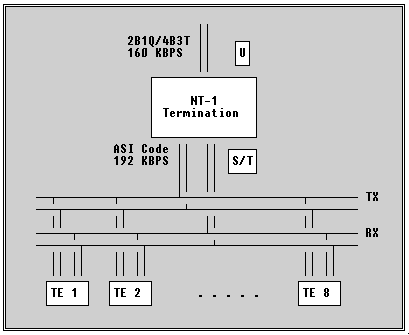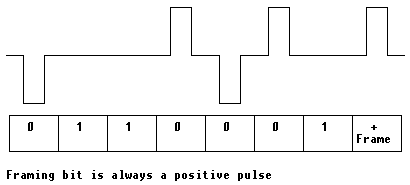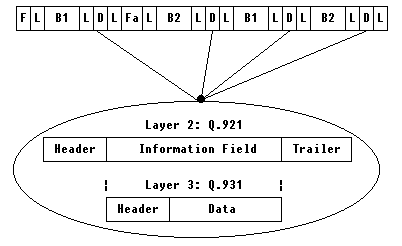| RETURN | ISDN Technology |
BRI S/T-Interface
The Basic Rate ISDN S/T-Interface is a 4-wire, full-duplex interface. When interconnecting multiple devices to a BRI line, this S-bus interface must be used. The S-bus is capable of terminating up to eight devices.


The S-bus is a 4-wire interface that transports full-duplex data streams of 192 KBPS with loss up to 6 dB. The interconnections used are 8-pin modular, RJ-45 jacks. A special line code, called ASI (Alternate Space Inversion) is employed on the line, resulting in a maximum line frequency of 96 KHz.
ASI is sometimes referred to as Modified Alternate Mark Inversion (MAMI). It is described in ITU Recommendation I.460.


Operation of the S-bus is full-duplex, 4-wire, at 192 KBPS.
- 128 KBPS B-Channel Data
- 16 KBPS D-Channel Data
- 48 KBPS Synchronization and overhead
Described in ITU Recommendation I.430, these frames (appropriately called “I.430 Frames”) are 48 bits in length. The frame construction is different depending upon the direction of the signal (NT-1 to Terminal, or Terminal to NT-1).


- A: Activation bit
- B1: 8-bit byte of B-Channel 1 data
- B2: 8-bit byte of B-Channel 2 data
- D: D-Channel bits
- E: Echo channel bits
- F: Framing bit (positive pulse)
- Fa: Auxillary Framing bit
- L: DC balancing bit
- M: Multi-framing bit
- N: Opposite binary state from Fa
- S: Reserved bit
General Framing Notes
- The terminal equipment “slaves” it’s transmit clock to that of the receive line from the NT-1.
- There are 2 bipolar violation in every frame.
- The Frame bit always causes a bipolar violation because the last pulse in the preceding frame is a positive pulse.
- The L-bit immediately following the Framing bit is always a negative pulse.
- In the event of all 1s (no pulses) after the first L-bit, the Auxillary Framing bit will be a negative pulse to create the second bipolor violation in the frame.
- The first pulse in a B-Channel byte is always a negative pulse.
- Subsequent B-Channel bits are ASI encoded.
- D-Channel bits are echoed back to the Terminal from the NT-1 through the use of the Echo-Channel bits.
- All logic 0 (space) bits are transmitted as negative pulses.
- The L-bits ensure that there are an even number of pulses since the last L-bit.
Line Contention
A terminal device with nothing to send enters a “marking” state, presenting zero voltage on the line. This is one of the reasons that ASI coding is used on the S-bus interface.
Since the switch assigns B-Channel use, the only contention that occurs between terminals on the S-bus interface is for the D-Channel. The D-Channel transports the bits that make up the signaling and control messages for ISDN systems.

